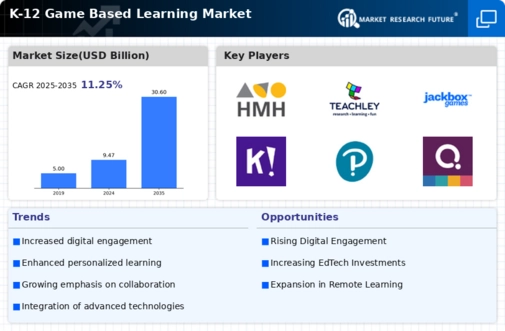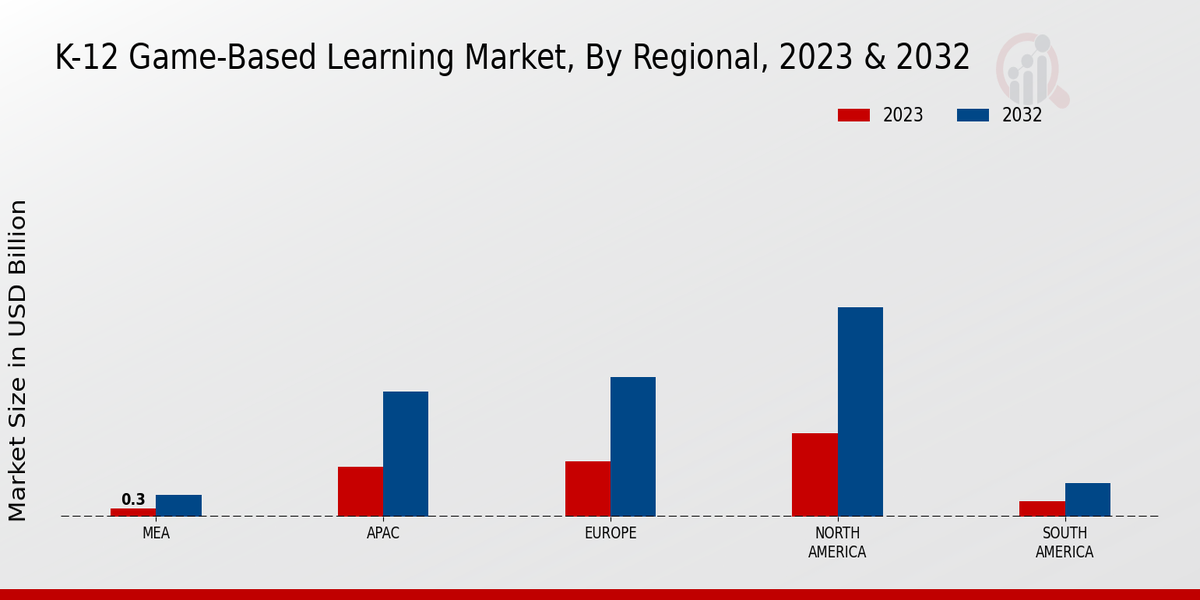Market Growth Chart
Diverse Learning Environments
The Global K-12 Game Based Learning Market Industry benefits from the diversification of learning environments, including remote and hybrid models. Game-based learning platforms are particularly well-suited for these settings, as they provide engaging and interactive experiences that can be accessed from various locations. This flexibility allows educators to reach a broader audience and accommodate different learning styles. As educational institutions adapt to changing circumstances, the demand for game-based learning solutions is expected to rise, further contributing to market growth.
Emphasis on Skill Development
The Global K-12 Game Based Learning Market Industry is significantly influenced by the emphasis on skill development in education. Game-based learning not only imparts knowledge but also fosters critical thinking, problem-solving, and collaboration skills among students. Educational institutions are increasingly adopting these methodologies to prepare students for future challenges in a rapidly changing world. The incorporation of games into learning environments has been shown to enhance cognitive skills and promote active learning. As a result, the market is expected to grow at a CAGR of 11.25% from 2025 to 2035, reflecting the increasing recognition of the importance of skill development in education.
Supportive Government Initiatives
Government initiatives play a crucial role in the growth of the Global K-12 Game Based Learning Market Industry. Many countries are implementing policies that promote the integration of technology in education, including funding for digital resources and training for educators. These initiatives aim to enhance educational quality and accessibility, particularly in underserved communities. For example, various governments are investing in programs that support the development and implementation of game-based learning tools in schools. Such support is likely to drive market growth, as educational institutions increasingly adopt innovative solutions to improve learning outcomes.
Growing Demand for Personalized Learning
Personalized learning is gaining traction in the Global K-12 Game Based Learning Market Industry, as educators strive to cater to individual student needs. Game-based learning platforms offer adaptive learning experiences that adjust to each student's pace and style, promoting deeper understanding and mastery of subjects. This shift towards personalized education aligns with the broader educational trend of recognizing diverse learning preferences. As the market evolves, it is projected to reach 30.6 USD Billion by 2035, driven by the increasing demand for tailored educational experiences that enhance student outcomes and engagement.
Increased Adoption of Technology in Education
The Global K-12 Game Based Learning Market Industry experiences a notable surge in the adoption of technology within educational settings. Schools increasingly integrate digital tools to enhance learning experiences, with game-based learning platforms emerging as effective solutions. For instance, the integration of interactive games into curricula has been shown to improve student engagement and retention rates. As of 2024, the market is valued at approximately 9.47 USD Billion, reflecting the growing recognition of technology's role in education. This trend is likely to continue, as educators seek innovative methods to meet diverse learning needs and foster collaboration among students.























